Shock Wars: How Did We Get Here?
Shock Wars: How Did We Get Here?
In the world of dirt oval track racing there are few components that are as glorified as much the modern racing shock.

by Jonathon Masters
I the world of dirt oval track racing there are few components that are as glorified as much the modern racing shock.
At the same time there are few expenses that have become as vilified as the rising price that has become attached to them. Shock prices have become the topic of track and series rules' meetings as well as internet message board discussions. It's ironic that these same discussions often ignore other exuberant costs associated with racing today, focusing instead focus on an item that until the early 2000's seen as just another suspension component of equal importance to springs and other items.
Shocks have taken the absolute center stage in most racers' programs and their willingness to dedicate more of their budgets to this component shows no sign of slowing. The question we need to ask ourselves before moving forward on shocks is, "how did we get here?"
If we are going to look at shocks today, first we need to look back to where we were around 20 years ago. Before the major boom in choices we've seen in the new millennium there were three names that most short track racers turned to for shocks. AFCO, Carrera, and Pro were what you were going to see on the shocks on most racers. The prices of those shocks on retail were going to range $125-150. To give you a better idea of what that would mean today, factoring inflation would bring that to $200-250. Most racers will tell you that they are now paying $650 to $900 for their shock, with some going as high as $1,500 or even $3,000.
Genesis Racing Shocks' Mike Lutz has seen it all when it comes to evolution of racing shocks. When asked how we got to the current climate of the shock industry, he changed the question.
"Should we be here is the better question. It's been a gradual build. New players have entered over the past 20 years with bolder ideas. A lot of marketing hype and added services. The technology of a lot of the shocks hasn't accelerated the way some believe. The same patents that applied in the 1950's still stand."
Lutz credits constantly chasing changing rules by sanctioning bodies and a change in the mentality of racers to some of the increase as well. "If you charge a racer $50 less for a shock he's not going to save it back. He's going to find something else to spend it on in the car."
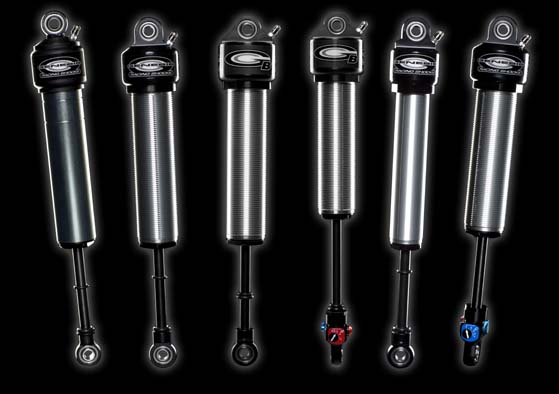
(Genesis Shocks)
One of the first of the new players in racing shock of the last 25 years was Integra Racing Shocks that are produced by Keyser Manufacturing. One of their late model specialists Gary Winger knows firsthand what it takes to stay competitive and relevant in today's racing world.
"People have come to expect you to be there with a mobile shock trailer and team of specialist to service a racer's shock program. We have to have top of the line dynos and the ability to rebuild and service shocks on site. Racers demand it and have to factor all that additional cost of operation in when they look at the price of a modern racing shock. If you slack off or are not working constantly to get better they will go down the road to the next guy."
Winger races with his son and hears all the same things anyone that spends time at the trace does.
"You hear a lot of people say they aren't able to keep up with the national stars because of the increased budget the bigger teams have for shocks programs. The truth is that the increase in shock technology has helped the little guy more than the national veterans. In the 90's you had racers that were lapping the field once and sometimes twice. Today the less experienced and lower funded teams are actually keeping up with and sometimes beating those racers. The increased traction and car control they are getting from the increase in technology is closing the experience and talent gap and allowing racers that would have been lap traffic in the past to be contenders now."
Jason Young of Öhlins Racing Shocks credits a combination between the tech boom and racer's increased demands for the current state of shocks.
"Back in the day the shocks we were running on race cars were the same thing you could go to your local auto parts store and buy. Now we have true racing shocks. We have to factor in the research and development time, testing, and servicing crews to the current shock prices."
One thing that is said a lot is that if the technology has increased so much then why aren't lap times going down and track records being broken. Jason disagrees with this perception.
"Track records are being broken. In the last little bit in the Southeast we have seen the record at Bulls Gap and several other tracks be lowered. You also have to factor in that lap times aren't slowing during the night aren't falling the way they would in the past. In the slick the cars are still staying fast. Shocks and other components on the cars are keeping the 900 Horse Power motors planted to the track better than in the past. Use to be when the track was tacky you could get power to the track and when it slicked off you'd spin the tires. There isn't much tire spin these days."
The truth is that when we look at the current state of the shock market, the "shock wars" as some label it, is fostered by the racers themselves.
Racers demand the shock trailers with specialist and dynos. Racers will drop a shock company at the drop of hat and buy elsewhere if they perceive their current shock of choice is falling behind somebody else. Inflation and technology leaps are playing a role in the price increases, but are marginal compared to the increased infrastructure racers demand of a modern shock company.
Many of these shock specialist and engineers are being worked day and night in an effort to keep up with trends and other shock companies. A lot is being demanded of these hard-working individuals and a lot of added expense is being pushed onto the shock manufacturers.
The people that are benefiting from this are the same ones doing the most complaining, the racers. Today racers are able to close the experience and knowledge gap at an amazing rate thanks to the knowledge and hard work the shock companies and specialist have done. Racers are also able to get shocks rebuilt onsite or in a matter of days thanks to the increased services companies like Ohlins, Integra, Genesis, Penske, BSB, AFCO, JRI, QA1, and others have added over the past two decades. The shock wars will continue to rage on fueled by the hard work and passion of everyone involved and the racers who benefit will always be the winners.
In memory of Mike Farr, founder of Genesis Shocks; the original Shock Guru.
-- Jonathon Masters has a lifelong connection with dirt racing. His family has owned and operated MasterSbilt Race Cars manufacturing dirt late model chassis for 35 years. He attended college in North Carolina for motor sports management and has written for various industry publications. Jonathon was an account executive at The International Motorsports Industry Show, founder of the Heartland Auto Racing Show, and has been a racing industry professional for over a decade.
Eldora's Party On The Hill
The Rise Of IMIS
The Making of a Crown Jewel
Steve Casebolt Moves to Jim Beeman Motorsports
Welcome to the Bigs Bubba
Dover International Speedway Has Some Monster Storylines
Daniel Suarez Translates Opportunity Into Success
For Ryan Blaney The Future Is Now And It's A Bright One
I the world of dirt oval track racing there are few components that are as glorified as much the modern racing shock.
At the same time there are few expenses that have become as vilified as the rising price that has become attached to them. Shock prices have become the topic of track and series rules' meetings as well as internet message board discussions. It's ironic that these same discussions often ignore other exuberant costs associated with racing today, focusing instead focus on an item that until the early 2000's seen as just another suspension component of equal importance to springs and other items.
Shocks have taken the absolute center stage in most racers' programs and their willingness to dedicate more of their budgets to this component shows no sign of slowing. The question we need to ask ourselves before moving forward on shocks is, "how did we get here?"
If we are going to look at shocks today, first we need to look back to where we were around 20 years ago. Before the major boom in choices we've seen in the new millennium there were three names that most short track racers turned to for shocks. AFCO, Carrera, and Pro were what you were going to see on the shocks on most racers. The prices of those shocks on retail were going to range $125-150. To give you a better idea of what that would mean today, factoring inflation would bring that to $200-250. Most racers will tell you that they are now paying $650 to $900 for their shock, with some going as high as $1,500 or even $3,000.
Genesis Racing Shocks' Mike Lutz has seen it all when it comes to evolution of racing shocks. When asked how we got to the current climate of the shock industry, he changed the question.
"Should we be here is the better question. It's been a gradual build. New players have entered over the past 20 years with bolder ideas. A lot of marketing hype and added services. The technology of a lot of the shocks hasn't accelerated the way some believe. The same patents that applied in the 1950's still stand."
Lutz credits constantly chasing changing rules by sanctioning bodies and a change in the mentality of racers to some of the increase as well. "If you charge a racer $50 less for a shock he's not going to save it back. He's going to find something else to spend it on in the car."

(Genesis Shocks)
One of the first of the new players in racing shock of the last 25 years was Integra Racing Shocks that are produced by Keyser Manufacturing. One of their late model specialists Gary Winger knows firsthand what it takes to stay competitive and relevant in today's racing world.
"People have come to expect you to be there with a mobile shock trailer and team of specialist to service a racer's shock program. We have to have top of the line dynos and the ability to rebuild and service shocks on site. Racers demand it and have to factor all that additional cost of operation in when they look at the price of a modern racing shock. If you slack off or are not working constantly to get better they will go down the road to the next guy."
Winger races with his son and hears all the same things anyone that spends time at the trace does.
"You hear a lot of people say they aren't able to keep up with the national stars because of the increased budget the bigger teams have for shocks programs. The truth is that the increase in shock technology has helped the little guy more than the national veterans. In the 90's you had racers that were lapping the field once and sometimes twice. Today the less experienced and lower funded teams are actually keeping up with and sometimes beating those racers. The increased traction and car control they are getting from the increase in technology is closing the experience and talent gap and allowing racers that would have been lap traffic in the past to be contenders now."
Jason Young of Öhlins Racing Shocks credits a combination between the tech boom and racer's increased demands for the current state of shocks.
"Back in the day the shocks we were running on race cars were the same thing you could go to your local auto parts store and buy. Now we have true racing shocks. We have to factor in the research and development time, testing, and servicing crews to the current shock prices."
One thing that is said a lot is that if the technology has increased so much then why aren't lap times going down and track records being broken. Jason disagrees with this perception.
"Track records are being broken. In the last little bit in the Southeast we have seen the record at Bulls Gap and several other tracks be lowered. You also have to factor in that lap times aren't slowing during the night aren't falling the way they would in the past. In the slick the cars are still staying fast. Shocks and other components on the cars are keeping the 900 Horse Power motors planted to the track better than in the past. Use to be when the track was tacky you could get power to the track and when it slicked off you'd spin the tires. There isn't much tire spin these days."
The truth is that when we look at the current state of the shock market, the "shock wars" as some label it, is fostered by the racers themselves.
Racers demand the shock trailers with specialist and dynos. Racers will drop a shock company at the drop of hat and buy elsewhere if they perceive their current shock of choice is falling behind somebody else. Inflation and technology leaps are playing a role in the price increases, but are marginal compared to the increased infrastructure racers demand of a modern shock company.
Many of these shock specialist and engineers are being worked day and night in an effort to keep up with trends and other shock companies. A lot is being demanded of these hard-working individuals and a lot of added expense is being pushed onto the shock manufacturers.
The people that are benefiting from this are the same ones doing the most complaining, the racers. Today racers are able to close the experience and knowledge gap at an amazing rate thanks to the knowledge and hard work the shock companies and specialist have done. Racers are also able to get shocks rebuilt onsite or in a matter of days thanks to the increased services companies like Ohlins, Integra, Genesis, Penske, BSB, AFCO, JRI, QA1, and others have added over the past two decades. The shock wars will continue to rage on fueled by the hard work and passion of everyone involved and the racers who benefit will always be the winners.
In memory of Mike Farr, founder of Genesis Shocks; the original Shock Guru.
-- Jonathon Masters has a lifelong connection with dirt racing. His family has owned and operated MasterSbilt Race Cars manufacturing dirt late model chassis for 35 years. He attended college in North Carolina for motor sports management and has written for various industry publications. Jonathon was an account executive at The International Motorsports Industry Show, founder of the Heartland Auto Racing Show, and has been a racing industry professional for over a decade.
Exclusive Content
Weekly Columns by Jonathon Masters
What It Takes To Succeed In Racing, Part 1 Equipment | Part 2, Crew | Part 3, Driver | Is A Toterhome And Trailer Worth The Cost?Eldora's Party On The Hill
The Rise Of IMIS
The Making of a Crown Jewel
Steve Casebolt Moves to Jim Beeman Motorsports
Weekly Columns by JD Hellman
Dale Jr. Snaps Winless Streaks At MichiganWelcome to the Bigs Bubba
Dover International Speedway Has Some Monster Storylines
Daniel Suarez Translates Opportunity Into Success
For Ryan Blaney The Future Is Now And It's A Bright One
Related Content
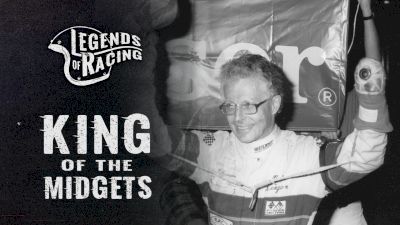 King Of The Midgets Sneak Peak: Miraculous Mel
King Of The Midgets Sneak Peak: Miraculous MelApr 19, 2024
 Berlin Raceway Opens 2024 Season: Everything You Need To Know
Berlin Raceway Opens 2024 Season: Everything You Need To KnowApr 19, 2024
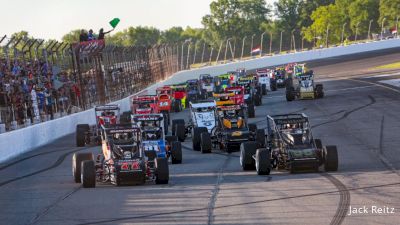 2024 USAC Silver Crown Championship Preview
2024 USAC Silver Crown Championship PreviewApr 19, 2024
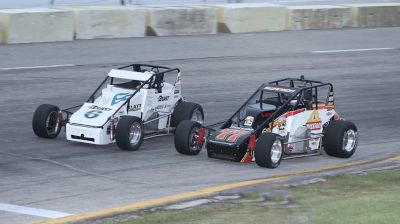 Storylines: USAC Silver Crown Series Begins Their Season At Toledo
Storylines: USAC Silver Crown Series Begins Their Season At ToledoApr 19, 2024
 All-Access: Carson Loftin - The Schoolboy Sensation
All-Access: Carson Loftin - The Schoolboy SensationApr 19, 2024
 Entry List For Kubota High Limit Racing At Southern Oklahoma Speedway
Entry List For Kubota High Limit Racing At Southern Oklahoma SpeedwayApr 19, 2024
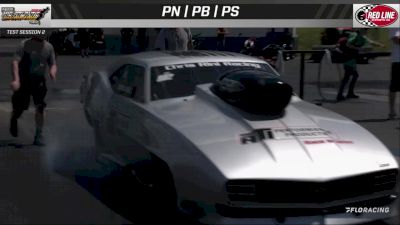 Full Replay | PDRA Mid-Atlantic Showdown 4/18/24
Full Replay | PDRA Mid-Atlantic Showdown 4/18/24Apr 19, 2024
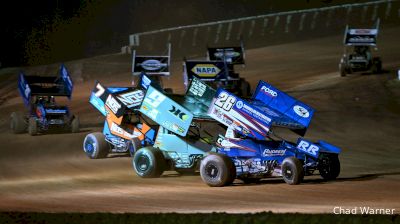 Storylines: High Limit Racing Weekend Doubleheader In Oklahoma
Storylines: High Limit Racing Weekend Doubleheader In OklahomaApr 18, 2024
 CARS Tour Drivers Explain What They Think About While Waiting For The Most Famous Words In Motorsports
CARS Tour Drivers Explain What They Think About While Waiting For The Most Famous Words In MotorsportsApr 18, 2024